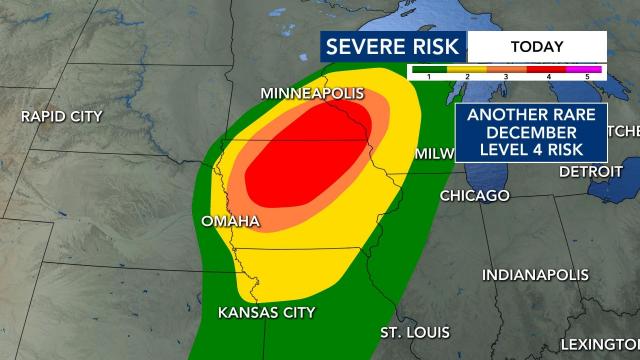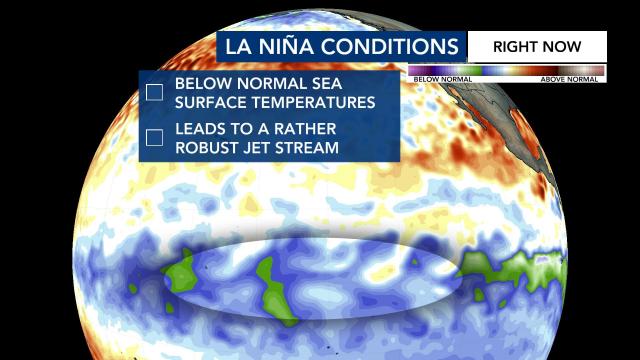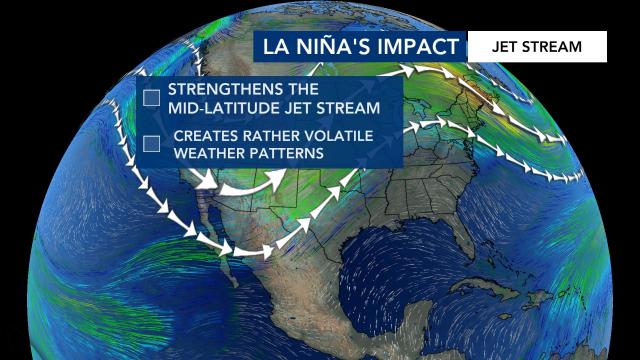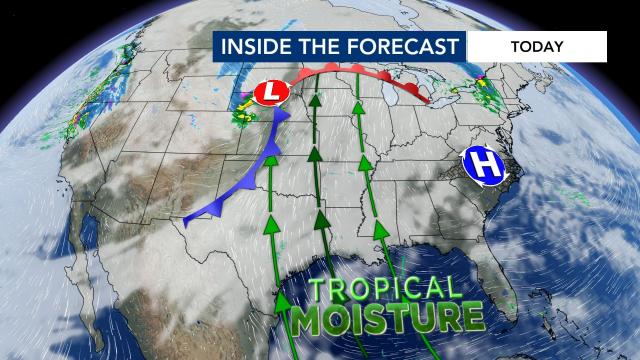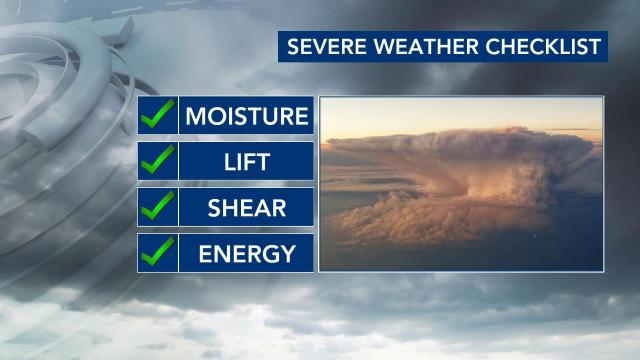- Couple accused of creating videos of young girls using hidden cameras at The Woodlands Mall, Hurricane Harbor
- Couple accused of creating videos with hidden cameras at The Woodlands Mall, Hurricane Harbor
- The Texanist: Texas Gets More Tornadoes Than Any Other State, but Don’t Freak Out
- U.S. Supreme Court says Texans can sue state for flood damage
- This is how many hurricanes NC State researchers predict this year
EF-4 tornado, 100-mph winds: WRAL Severe Weather Center unpacks the rare December storms

It’s been nearly a week since Friday’s deadly tornado outbreak, and while such severe weather in December is quite the rarity, it’s hard to believe we saw another significant severe weather event since then.
A recent preliminary survey has been released classifying the tornado that blasted western Kentucky last Friday as an EF-4. Winds reached 190 mph over some 128 miles on the ground. That classification is 10 mph shy of EF-5 as that is qualified by winds over 200 mph.
While Friday’s outbreak saw numerous tornadoes, some very strong and long tracking, Wednesday’s severe weather was significant in that widespread wind damage was seen across much of Nebraska, Iowa and Minnesota.
Wednesday’s Level 4 risk in Iowa and Minnesota was the eighth Level 4 risk to be issued nationwide in December since 2006. With widespread wind damage from gusts reported at over 80 mph, Wednesday’s storms rewrote Iowa and Minnesota’s weather history book. Before Wednesday, Iowa has only observed four December tornadoes since 1980 and Minnesota has never observed a tornado in December. Those numbers may very well change as National Weather Service meteorologists conduct damage surveys over the next few days.
After seeing two significant severe weather events this past week, the WRAL Weather Center wanted to dive into a few potential factors that may have influenced that activity. The potential answer to this increase in activity lies within both the current phase of the El Niño–Southern Oscillation (ENSO) and above-normal sea surface temperatures in the Gulf of Mexico.
What is the El Niño–Southern Oscillation (ENSO) in a nutshell?
The earth’s climate undergoes cyclical changes regularly, like seasonal patterns that occur annually. There are less-regular cycles with durations from a few months up to several decades and, while their cause is not clearly understood, their changes in one part of the world can have well-defined effects on global weather patterns.
The cycles are generally defined by changes in air pressure, sea temperature and wind direction over oceans.
The El-Niño-Southern Oscillation (ENSO) is one such cycle that has three phases defined by sea surface temperatures in the equatorial Pacific Ocean.
We have the warm phase (El Niño), the cold phase (La Niña) and the neutral phase, ENSO Neutral. Currently, La Niña conditions are present and may be one of the factors contributing to the jet stream’s increased volatility because it makes the normal easterly winds along the equator even stronger.
This corridor of cooler water temperatures and the corresponding air mass in the equatorial Pacific Ocean causes the jet stream to flow in a more volatile pattern from the north to the south (meridional flow) versus the more tranquil pattern from the west to the east (zonal flow).
With this rather volatile jet stream pattern comes low pressure systems that can not only form but also strengthen quite rapidly. Low pressure systems traveling across the country are a normal and almost bi-weekly occurrence in December.
Since these systems are a normal occurrence, La Niña’s enhancement of these lows is one potential reason why they are stronger and producing severe storms. Warmer sea surface temperatures present in the Gulf of Mexico also provide that extra enhancement in the environment, allowing severe storms to develop.
As low-pressure systems travel across the country, they draw up warm and moist air from the deep south and Gulf of Mexico. Since sea surface temperatures are warmer in the gulf, the air mass coming north from it is similar to an air mass in the spring versus the winter.
The warmer air temperatures and higher dew point temperatures are two of the four ingredients needed to produce severe weather.
The remaining two ingredients, lift and spin in the atmosphere, come from the strong areas of low pressure. Both Friday’s and Wednesday’s severe weather involved all four ingredients which enhanced the severity of those storms.
While severe storms did not impact us locally, WRAL’s team of meteorologists wanted to take a closer look at the factors contributing to such activity in December. We realize that both La Niña and above-normal sea surface temperatures in the Gulf of Mexico look to be the reason behind why we are seeing such active weather. As those factors contributing to the recent severe weather will not be changing anytime soon, we expect this volatile weather pattern to continue through the winter.
